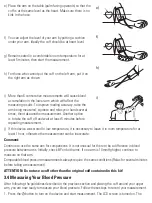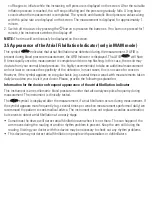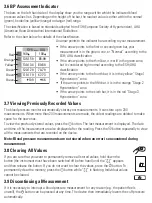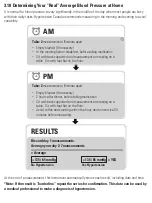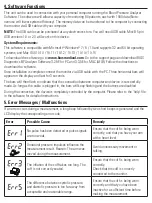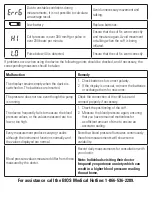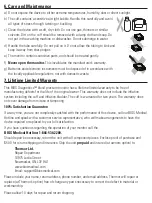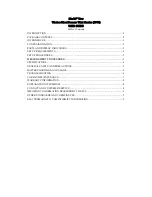
1.6C Medical Benefits
• Improved accuracy
1.6D Measurement Sequence
• Single results are not displayed
• Due to the “Data Analysis” result, a 4th or 5th measurement may be applied. The following illustration
provides a flow chart of the MAM Sequence
1.7 Important Facts About Atrial Fibrillation (AFIB)
1.7A What is Atrial Fibrillation (AFIB)?
Normally, your heart contracts and relaxes to a regular beat. Certain cells in your heart produce
electrical signals that cause the heart to contract and pump blood. Atrial fibrillation occurs when rapid,
disorganized electrical signals are present in the heart’s two upper chambers, called the atria; causing
them to contract quickly and irregularly (this is called fibrillation). Atrial fibrillation is the most common
form of heart arrhythmia or irregular heart beat. You can live with atrial fibrillation, but it can lead to other
rhythm problems, chronic fatigue, heart failure and - worst of all - a stroke. You will need a doctor to help
you control the problem.
1.7B How Does AFIB Impact Family or Me?
One in every six strokes is AFIB-related. While individuals above the age of 65 are more likely to have
AFIB, individuals as young as 40 can exhibit AFIB. Early diagnosis can help reduce the risk of a stroke.
1.7C AFIB detection provides a convenient way to screen for AFIB
(only in MAM mode)
Knowing your blood pressure and knowing whether or not you or your family members have AFIB can help
reduce the risk of stroke. AFIB detection provides a convenient way to screen for AFIB while taking your
blood pressure.
1.7D Risk Factors You Can Control
High blood pressure and AFIB are both considered «controllable» risk factors for strokes. Knowing your
blood pressure and knowing whether or not you have AFIB is the first step in proactive stroke prevention.

















